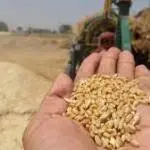No products in the cart.

Rabi Season Crops: A Comprehensive Guide to Winter Harvest
Rabi Season Crops: A Guide to the Winter Harvest
Introduction
As winter approaches, so does the rabi season, bringing forth a bounty of crops that are essential for our sustenance and economy. In this article, we will explore the world of rabi season crops, from what they are to why they are crucial for agriculture and food security.

Table of Contents
| Sr# | Headings |
|---|---|
| 1. | What are Rabi Season Crops? |
| 2. | Importance of Rabi Season Crops |
| 3. | Main Rabi Season Crops in India |
| 4. | Best Practices for Rabi Crop Cultivation |
| 5. | Challenges Faced by Farmers |
| 6. | Comparing Rabi and Kharif Crops |
| 7. | Economic Impact of Rabi Season Agriculture |
| 8. | Sustainable Practices for Rabi Farming |
| 9. | Rabi Crops and Their Nutritional Benefits |
| 10. | Conclusion |
What are Rabi Season Crops?
Rabi season crops are those sown in winter and harvested in spring. They typically require cool weather for germination and growth. These crops play a vital role in India’s agriculture and include wheat, barley, mustard, and peas among others.
Importance of Rabi Season Crops
Rabi crops are essential for maintaining the country’s food security and stabilizing prices. They help in utilizing residual soil moisture and contribute significantly to the overall agricultural output.
Main Rabi Season Crops in India
Wheat
Wheat is the most important rabi crop in India, cultivated in the largest area across the country.
Barley
Barley is another significant rabi crop, used both as a cereal and fodder crop in different parts of India.
Mustard
Mustard is crucial for its oil-rich seeds and leaves, widely grown during the rabi season across the northern plains.
Peas
Peas are a popular rabi crop due to their high nutritional value and demand in both domestic and international markets.
Best Practices for Rabi Crop Cultivation
Successful cultivation of rabi crops requires proper planning and management. Here are some best practices:
- Timely Sowing: Ensure sowing is done at the right time to make use of available soil moisture.
- Soil Preparation: Adequate soil preparation through plowing and leveling is essential.
- Seed Selection: Choose high-quality seeds for better yields.
- Irrigation Management: Optimize water use through techniques like drip irrigation.
- Pest Control: Monitor and control pests to prevent crop damage.
Challenges Faced by Farmers
Growing rabi crops comes with its challenges:
- Erratic Weather: Unpredictable weather patterns can affect crop growth.
- Market Fluctuations: Price volatility can impact farmer income.
- Water Scarcity: Limited availability of water for irrigation.
- Pest Attacks: Insect pests can cause significant damage to crops.
- Input Costs: Rising costs of seeds, fertilizers, and pesticides.
Comparing Rabi and Kharif Crops
Rabi and kharif crops differ in various aspects:
- Sowing Season: Rabi crops are sown in winter, while kharif crops are sown in the monsoon season.
- Harvesting Season: Rabi crops are harvested in spring, whereas kharif crops are harvested in autumn.
- Examples: Rabi crops include wheat and barley, whereas kharif crops include rice and maize.
Economic Impact of Rabi Season Agriculture
Rabi season agriculture has a significant economic impact:
- Employment: Provides employment opportunities to rural communities.
- Export: Contributes to the export earnings through commodities like wheat and mustard.
- Food Security: Ensures food availability throughout the year.
Sustainable Practices for Rabi Farming
Adopting sustainable farming practices is crucial for the environment and future generations:
- Crop Rotation: Helps in maintaining soil fertility and reducing pest attacks.
- Organic Farming: Reduces chemical inputs and promotes soil health.
- Water Conservation: Efficient use of water through rainwater harvesting and drip irrigation.
Rabi Crops and Their Nutritional Benefits
Rabi crops are nutritious and contribute to a healthy diet:
- Wheat: Rich in carbohydrates, proteins, and fiber.
- Barley: High in dietary fiber and vitamins.
- Mustard: Contains healthy fats and antioxidants.
- Peas: Excellent source of protein, vitamins, and minerals.
Conclusion
In conclusion, rabi season crops are vital for agriculture, food security, and the economy. By understanding their importance and implementing best practices, we can ensure sustainable crop production and a secure future.
Frequently Asked Questions (FAQs)
What are rabi season crops?
Rabi season crops are those that are sown in winter and harvested in spring, such as wheat, barley, and mustard.
Why are rabi season crops important?
Rabi season crops are important for maintaining food security, stabilizing prices, and utilizing residual soil moisture.
How can farmers optimize rabi crop cultivation?
Farmers can optimize rabi crop cultivation through timely sowing, proper soil preparation, and efficient irrigation management.
What are the challenges faced by farmers in growing rabi crops?
Farmers face challenges such as erratic weather, market fluctuations, water scarcity, pest attacks, and rising input costs.
How do rabi crops contribute to the economy?
Rabi crops contribute to the economy by providing employment, generating export earnings, and ensuring food availability.
This comprehensive guide provides insights into rabi season crops, their cultivation, challenges, and benefits. By adopting sustainable practices and addressing challenges, we can ensure a prosperous future for agriculture in India.
Go and turn on towards organic farming to save future and thire save childs:
Elevate Plant Growth with Premium Bone Powder – Buy Now!
Organic Cow Dung Compost: Transform Your Garden Naturally
Premium Humic Acid for Healthy Plants | Enhance Soil & Boost Growth
Boost Plant Growth Naturally with Mustard Cake | Organic Fertilizer
Transform Your Garden with NPK Fertilizer | Boost Growth by 30%
Premium Perlite for Enhanced Gardening | Buy Now
Live Earthworms with Enhance Your Garden (soil health)
1 Neem Khali: Unveiling the Wonders of Nature
1Transform your garden with vermiwash-buy now
1 Premium quality Vermicompost [ केचुआ खाद ]
Follow us:
Tagged Inrabi season crops



